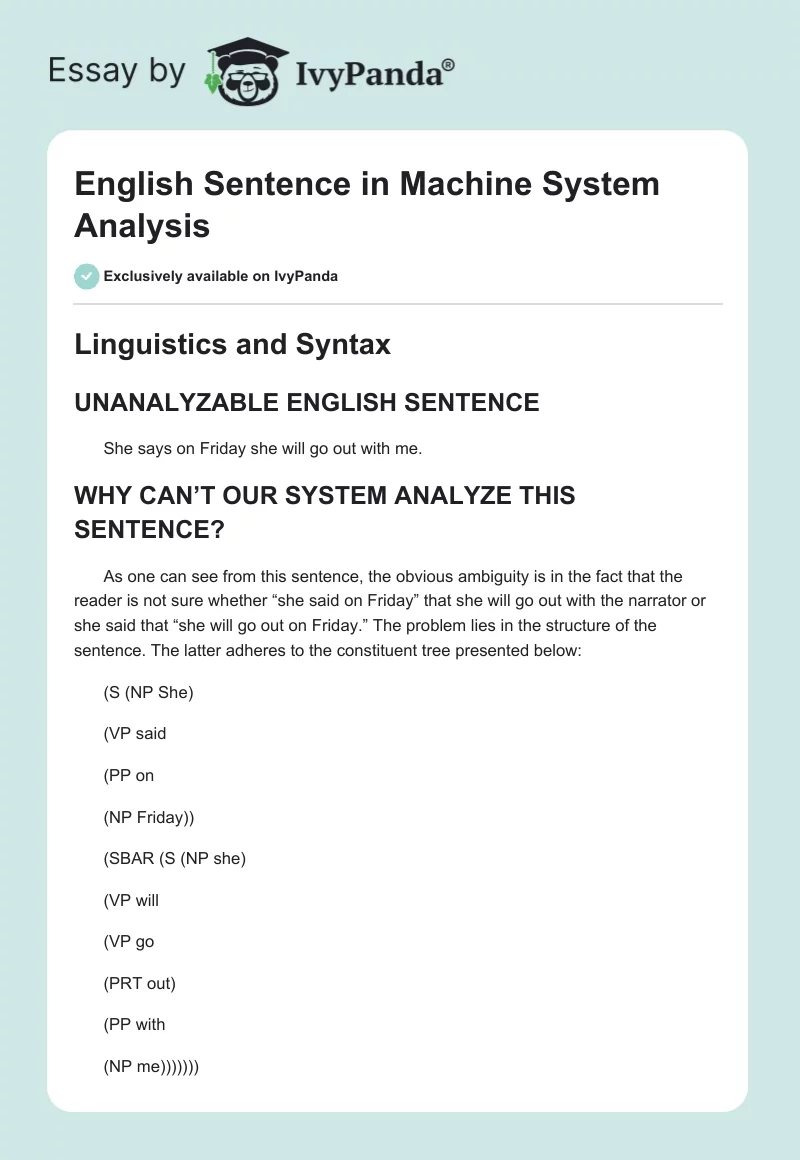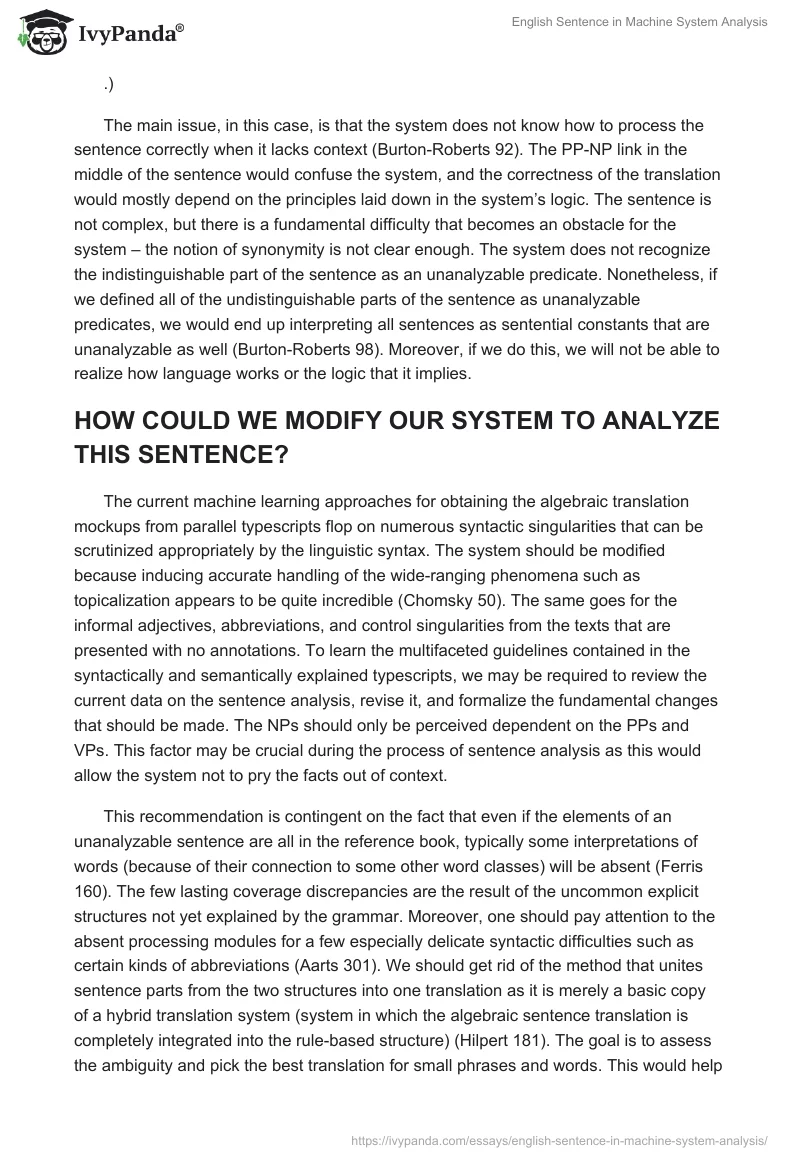Linguistics and Syntax
UNANALYZABLE ENGLISH SENTENCE
She says on Friday she will go out with me.
WHY CAN’T OUR SYSTEM ANALYZE THIS SENTENCE?
As one can see from this sentence, the obvious ambiguity is in the fact that the reader is not sure whether “she said on Friday” that she will go out with the narrator or she said that “she will go out on Friday.” The problem lies in the structure of the sentence. The latter adheres to the constituent tree presented below:
(S (NP She)
(VP said
(PP on
(NP Friday))
(SBAR (S (NP she)
(VP will
(VP go
(PRT out)
(PP with
(NP me)))))))
.)
The main issue, in this case, is that the system does not know how to process the sentence correctly when it lacks context (Burton-Roberts 92). The PP-NP link in the middle of the sentence would confuse the system, and the correctness of the translation would mostly depend on the principles laid down in the system’s logic. The sentence is not complex, but there is a fundamental difficulty that becomes an obstacle for the system – the notion of synonymity is not clear enough. The system does not recognize the indistinguishable part of the sentence as an unanalyzable predicate. Nonetheless, if we defined all of the undistinguishable parts of the sentence as unanalyzable predicates, we would end up interpreting all sentences as sentential constants that are unanalyzable as well (Burton-Roberts 98). Moreover, if we do this, we will not be able to realize how language works or the logic that it implies.
HOW COULD WE MODIFY OUR SYSTEM TO ANALYZE THIS SENTENCE?
The current machine learning approaches for obtaining the algebraic translation mockups from parallel typescripts flop on numerous syntactic singularities that can be scrutinized appropriately by the linguistic syntax. The system should be modified because inducing accurate handling of the wide-ranging phenomena such as topicalization appears to be quite incredible (Chomsky 50). The same goes for the informal adjectives, abbreviations, and control singularities from the texts that are presented with no annotations. To learn the multifaceted guidelines contained in the syntactically and semantically explained typescripts, we may be required to review the current data on the sentence analysis, revise it, and formalize the fundamental changes that should be made. The NPs should only be perceived dependent on the PPs and VPs. This factor may be crucial during the process of sentence analysis as this would allow the system not to pry the facts out of context.
This recommendation is contingent on the fact that even if the elements of an unanalyzable sentence are all in the reference book, typically some interpretations of words (because of their connection to some other word classes) will be absent (Ferris 160). The few lasting coverage discrepancies are the result of the uncommon explicit structures not yet explained by the grammar. Moreover, one should pay attention to the absent processing modules for a few especially delicate syntactic difficulties such as certain kinds of abbreviations (Aarts 301). We should get rid of the method that unites sentence parts from the two structures into one translation as it is merely a basic copy of a hybrid translation system (system in which the algebraic sentence translation is completely integrated into the rule-based structure) (Hilpert 181). The goal is to assess the ambiguity and pick the best translation for small phrases and words. This would help to keep the system within the language rules and monolingual language representations (Wang and Berwick 186).
Works Cited
Aarts, Bas. English Syntax and Argumentation. Basingstoke, Palgrave, 2011.
Burton-Roberts, Noel. Analysing Sentences: An Introduction to English Syntax. London, Longman, 2016.
Chomsky, Noam. Aspects of the Theory of Syntax. Cambridge, MIT Press, 2014.
Ferris, Connor. The Meaning of Syntax: A Study in the Adjectives of English. London, Longman, 2014.
Hilpert, Martin. Constructional Change in English: Developments in Allomorphy, Word Formation, and Syntax. Cambridge, Cambridge University Press, 2013.
Wang, Yingxu, and Robert C. Berwick. “Formal Relational Rules of English Syntax for Cognitive Linguistics, Machine Learning, and Cognitive Computing.” Journal of Advanced Mathematics and Applications, vol. 2, no. 2, 2013, pp. 182–195. Web.


